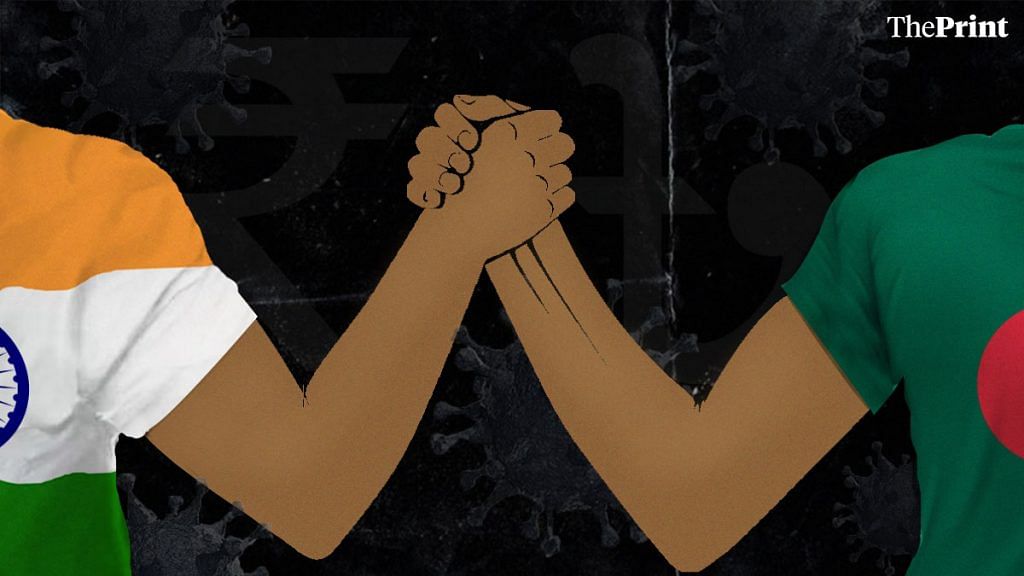New Delhi: While the International Monetary Fund’s prediction that Bangladesh will surpass India in terms of per capita gross domestic product has sparked anxiety, the metrics being compared are incorrect and misleading, economist and former chief economic advisor Arvind Subramanian has said.
In a Twitter thread Saturday, he wrote, “The India-vs.-Bangladesh GDP per capita comparison (post @IMFNews WEO) has sparked anxiety & acrimony. But wrong numbers being compared. NO, on more appropriate metric, India has not been surpassed and, according to IMF, unlikely to be in near future.”
1/ The India-vs.-Bangladesh GDP per capita comparison (post @IMFNews WEO) has sparked anxiety & acrimony
But wrong numbers being compared
NO, on more appropriate metric, India has not been surpassed and, according to IMF, unlikely to be in near future pic.twitter.com/hdJskGbTBY
— Arvind Subramanian (@arvindsubraman) October 16, 2020
According to the World Economic Outlook report released by the IMF this week, while Bangladesh’s per capita GDP in dollar terms is expected to grow by 4 per cent this year to $1,888, India’s per capita GDP is expected to decline 10.5 percent to $1,877. The figures have sparked a controversy, with the Opposition targeting the Centre for the slowdown.
Former Congress President Rahul Gandhi took a jibe at the government, tweeting, “Solid achievement of 6 years of BJP’s hate-filled cultural nationalism: Bangladesh set to overtake India.”
Also read: Demonetisation, GST, lockdown sans relief dealt body blow to Indian economy — Raghuram Rajan
‘Other, more apt yardsticks than what IMF has used’
Weighing in on the controversy, Subramanian, however, said that GDP per capita is only an estimate for one indicator of the average standard of living or welfare in a country. There could be several other indicators of the standard of living in the country like the human development index, for example, he said. And even if one were to take GDP as the indicator, there can be many ways to measure it.
“We need to measure ‘real’ GDP in local currency after taking out effects of inflation and then, convert all local currency estimates of real GDP into comparable dollars,” he said, adding the IMF has three ways of doing this, while the World Bank has four.
The IMF has focused only on comparisons based on GDP measured at current market exchange rates, but these are not always an apt yardstick for global comparisons on welfare because they might not include domestic inflation or productivity growth.
The more appropriate basis of comparison, Subramanian wrote, is purchasing power parity (PPP) exchange rates, even as GDP is kept constant. Using this metric, India is ahead of Bangladesh, and despite the coronavirus-induced lockdown and its effect, will probably remain so.
However, even here, there are caveats, Subramanian cautioned: “IMF’s historical numbers are themselves based on countries’ local currency GDP estimates which are subject to uncertainty for both India and Bangladesh… And IMF forecasts can also be off.”
The economist also said India has no room for complacency since its economic growth had been slowing even before Covid, and the impact of the pandemic has been severe. India would return to the pre-Covid level of real per capita GDP only in 2022, which means three lost years, he added.
Moreover, Bangladesh’s performance over the last two decades on growth, manufacturing exports and a range of other social indicators such as fertility and female labour participation has been “remarkable,” he said. “Bangladesh is a miracle-in-the-making offering development lessons for all.”
Also read: India’s public debt ratio to jump to 90% due to Covid, IMF says
